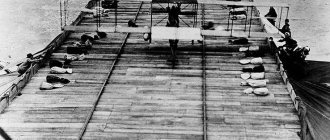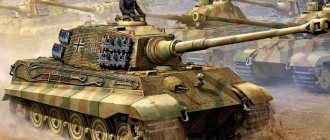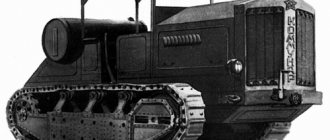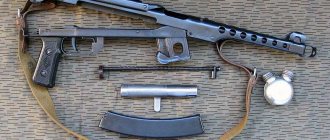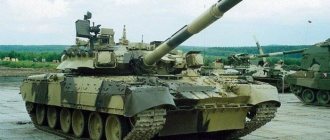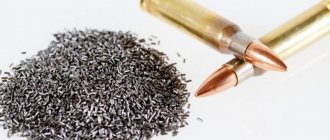On August 14, 1904, Russian sailors of the Vladivostok cruiser detachment entered into an unequal battle with Japanese battleships
In the history of the Russo-Japanese War of 1904-1905, two naval battles stand apart, becoming a symbol of the perseverance and courage of Russian sailors. One of them is known, perhaps, to everyone - this is the battle near the port city of Chemulpo with the participation of the cruiser "Varyag" and the gunboat "Koreets". The other battle is not so widely celebrated, but for sailors it is as symbolic as the first. This is the so-called battle in the Korea Strait, or, as it is also called, a naval battle with the participation of the Vladivostok detachment of cruisers, which included the cruisers Rurik, Rossiya and Gromoboy.
The results of this naval battle, which took place on August 14 (1st Art. Art.), 1904, are disappointing for the St. Andrew's flag. Of the three cruisers that took part in it, one - the armored cruiser of the first rank "Rurik" - was lost, sunk by its crew, and the other two returned to Vladivostok with heavy damage. However, this battle absorbed part of the forces of the Japanese fleet, which, albeit slightly, nevertheless eased the position of the Russian fleet, which was fighting on the outskirts of Port Arthur.
Cruisers rush to the rescue
The Vladivostok detachment of cruisers consisted of five ships: in addition to the armored Rurik, Rossiya and Gromoboy, it also included the armored cruiser Bogatyr and the auxiliary cruiser Lena. The idea of creating such a detachment was born in March 1901, when it was decided to allocate part of the cruisers of the 1st Pacific Squadron and place them in Vladivostok, so that from there they could carry out cruising operations in the Pacific Ocean.
Rear Admiral Karl Jessen, who commanded the Vladivostok detachment of cruisers during the battle in the Korea Strait on August 14 (1st century), 1904
Source: wiki.wargaming.net
The choice of ships for the detachment was obvious: these were cruisers, which, due to their design features and combat capabilities, were much better suited for independent cruising operations, rather than for squadron combat. They were fast and had a very long range, but all this was achieved by reducing the armor and lightening the artillery armament. And it was precisely this circumstance that played a fatal role during the battle in the Korean Strait. The Japanese cruisers that opposed the Russians were much less fast and less suitable for cruising, but they had powerful armor and weapons. In fact, the Japanese ships were no longer so much cruisers as battleships, and this gave them a tremendous advantage during the battle of August 14, 1904.
However, the Russian sailors had no choice - to engage in battle or avoid it. Three cruisers (the rest were unable to set off because they were not ready to go to sea) rushed to the aid of their comrades from the squadron, which had recently left besieged Port Arthur and was trying to break through to Vladivostok. These ships, attacked by significantly superior Japanese forces, needed help, and any help that the Russian fleet could provide. And therefore, on the “Rurik”, “Russia” and “Gromoboe” they did not look at how much and in what they were inferior or superior to the Japanese, the only important thing was that help to their comrades arrived on time.
Admiral Hikonoze Kamimura, commander of a detachment of Japanese battleships during the battle in the Korea Strait on August 14 (1st century), 1904
Source: wiki.wargaming.net
But Rear Admiral Karl Jessen, who commanded the three Russian cruisers, did not know that by the time the detachment left Vladivostok on August 12 (July 30, O.S.), the Port Arthur squadron had already lost the battle in the Yellow Sea and had partially dispersed, and partially returned to Port Arthur. And now only Japanese ships could be met by Russian sailors in the Korea Strait...
New tasks
The failures of the first days of the war led to personnel rotations in the fleet leadership. The tsarist government appointed Admiral Makarov as commander. He set new tasks for the Rurik and its squadron. It was decided to abandon the strategy of raids on the Japanese coast. Instead, Rurik now had to prevent the transfer of enemy troops to Genzan. This Korean port was a Japanese bridgehead, and ground operations began from there.
Makarov allowed to go to sea in any composition (it doesn’t matter whether it will be a squadron or individual ships). He reasoned on the basis that Russian guns were more powerful and more effective than Japanese ones. The admiral was wrong. Hat-kicking sentiments in Russia on the eve of the war were commonplace. The Japanese were not perceived as serious opponents.
The economy of this Asian country has been isolated for a long time. And only in recent years have Tokyo begun forced reforms in the army and navy. The new armed forces were built on Western European models. Equipment was also purchased from abroad and only of the best quality. Japanese intervention in the Far East was looked down upon in Moscow, considering the Japanese to be upstarts. It was because of this frivolous attitude that the entire war was lost. But for now the prospects were unclear, and the headquarters hoped for chance and the courage of the Russian sailors.
Meeting in the Strait
The instructions received by the detachment commander, Rear Admiral Jessen, stipulated that the Vladivostok cruiser detachment should enter the Korea Strait at dawn on August 14. This instruction, given by the commander of the fleet in the Pacific Ocean, Admiral Nikolai Skrydlov, played another fatal role in the events. Appointed commander after the death of Admiral Stepan Makarov on March 31, 1904, Skrydlov did not have time to get to Port Arthur after the siege began and commanded the fleet from Vladivostok, forced to make decisions based on telegrams that arrived there late.
Armored cruiser "Gromoboy" in Vladivostok, winter 1903-1904
Source: navsource.narod.ru
This happened this time too: by the morning of August 14, when the Vladivostok cruisers, as ordered, entered the Korea Strait, ships of the Japanese squadron of Admiral Hikonoze Kamimura, consisting of four armored cruisers Izumo and Azuma, were already cruising there. , Tokiwa and Iwate. Their main task was to cut off the path to Vladivostok for the ships of the Port Arthur squadron that had broken through, but in reality they became the main opponents of Rear Admiral Jessen’s detachment.
In the predawn darkness, the two squadrons missed each other, and the Vladivostok detachment of cruisers entered the strait, confident that it was still clear of enemy ships. The fact that this was not the case became clear closer to five o’clock in the morning, when the Russian cruisers turned west and soon saw Japanese battleships in the dawn rays, heading across them.
Armored cruiser "Russia" in Vladivostok, autumn 1904
Source: tsushima.su
At this moment, Rear Admiral Jessen made a mistake, which became the key to future defeat. Instead of approaching the Japanese ships at a short distance, at which all the artillery of Russian cruisers, including small-caliber, could operate effectively, he gave the order to turn east, and then even further south. Thus, the ships of the Vladivostok detachment found themselves facing the Japanese, exposing their most vulnerable spots to enemy guns. And the enemy was not slow to take advantage of such a favorable position.
First trip
The cruisers went on their first voyage to the Sangar Strait. The next target was planned to be the city of Genzan (modern Wonsan). However, on the way, the ships encountered a storm. Since it was winter on the calendar, the water that got into the guns soon turned into ice. Because of this, the squadron became incapable of combat. The weather and climatic conditions were indeed not the best. In order to leave Vladivostok, the cruisers had to wait for the icebreaker to open the way for them through the frozen bay.
It was this inconvenience that forced the Russian leadership to occupy the Chinese fortress of Port Arthur. Her port didn't freeze. The Japanese also wanted to get the strategically important and convenient Port Arthur. The city and the ships in it were blocked. The Rurik squadron was supposed to disperse enemy forces in order to ease the situation of the port, while the ships of the Baltic Fleet came to the rescue. Due to icing of the guns, the detachment returned to Vladivostok for a short time.
On parallel courses
The very first salvos from Japanese battleships began to cause significant damage to Russian ships. First of all, the crews suffered losses. According to the combat schedule, all crews of the ship's guns, including small-caliber ones that were completely useless in a squadron battle and had weak protection, had to be in their places. It was these gunners who suffered the most significant losses, being deprived of even the opportunity to return fire with fire. This was avoided only on the Thunderbolt, whose commander ordered the gunners of small-caliber guns to take refuge in casemates: at their expense, the crews of large-caliber naval artillery, which also suffered losses, were replenished.
Armored cruiser "Rurik" in Vladivostok, early 20th century
Source: tsushima.su
The return fire of the Russian cruisers was initially very effective. One of the shells fired by the Rurik gunners hit the roof of the casemate of the large-caliber gun of the Japanese cruiser Iwate. The ammunition detonated, and three guns went out of action at once, and the losses from this hit amounted to 40 people, 31 of whom died on the spot (the bodies of many were never found).
But this turned out to be the greatest success of the Russian ships: they were unable to achieve such fire efficiency. Yes, the Japanese ships, to the aid of the cruisers Naniwa and Takachiho from the detachment of Vice Admiral Sokotiki Uriu, received a total of 40 hits from Russian shells, but besides the only one fired by the Rurik, the rest did not inflict serious damage on them damage. At the same time, the Russian cruisers received more than three dozen hits each, and for the Rurik many of them became fatal.
St. Andrew's flag of the armored cruiser "Gromoboy" after the battle in the Korea Strait, August 16 (3rd Art.)
Source: navsource.narod.ru
The battle lasted more than five hours and quite quickly turned into a pursuit of Japanese ships after Russian cruisers, constantly changing course so that the Rossiya and Gromoboy covered the Rurik. This ship had the weakest armor and lost control at the very beginning of the battle. Moreover, he lost it in every sense: the ship’s commander was killed by one of the first hits, then the rudder control system was damaged, the ship could change course only by working with machines. In addition, very soon the cruiser received a hole below the waterline and began to settle to the stern, losing speed.
Construction
The famous armored cruiser "Rurik" became the brainchild of the Baltic Shipyard. This ship was created in the heat of a military race with the British fleet. The ship was supposed to become a worthy analogue of the English high-speed cruisers "Blake". In 1888, engineers from the Baltic Shipyard proposed a draft project to Admiral Chikhachev and the Marine Technical Committee (MTK).
The preliminary design has been revised. In MTK, the future cruiser "Rurik" got rid of some design and technical flaws. The drawings were approved by Emperor Alexander III. Construction began on May 19, 1890. After two years of work, the Baltic Shipyard prepared the cruiser Rurik. It was launched in 1892, and in 1895 the ship was put into operation.
It was assumed that the ship would be the first in a series of cruisers of the same type. The “Gromoboy” and “Russia” built after it were not twin brothers, but modifications (with increased displacement). Interestingly, the cruiser Rurik was created as a potential interceptor of English merchant ships. It was assumed that it would be used in this way in the event of war with Great Britain. In addition, the terms of reference included a requirement to create a ship capable of sailing from the Baltic Sea to the Far East without resorting to refueling with coal. In order to complete this route, the crew needed to sail through the southern seas and circumnavigate almost all of Eurasia.
Order of Ivanov-Thirteenth
At the very beginning of the battle, the captain of the Rurik, Evgeniy Trusov, died. The senior officer who was supposed to replace him was also mortally wounded. In total, out of 800 people in the team, 200 died and about 300 more were wounded. The last surviving senior officer was Konstantin Ivanov. At the end of the five-hour battle, when its outcome was already clear, this man took command.
Meanwhile, the Japanese began to give signals that they were ready to accept the enemy's surrender. The squadron was commanded by Admiral Hikonojo Kamimura. He was just returning from chasing “Russia” and “Thunderbolt” and was now waiting for a response from the surrounded crew. When Ivanov realized that all means of resistance had been exhausted, he ordered the ship to be scuttled. Usually the Russian fleet used special charges for this purpose, which blew up the ship. However, this time they were damaged. Then the crew decided to open the seacocks - special valves. After this, the water rushed into the ship's system even more strongly. "Rurik" (the cruiser of 1892) quickly sank, first capsizing on the left side, and then completely finding itself under water.
Footnotes [edit]
Notes[edit]
- Dates used in this article follow the new style.
- The revolution began on October 25 according to the old calendar style, hence its name.
Quotes [edit]
- Jump up
↑ Dodson, pp. 78, 100. - Dodson, p. 100.
- ^ abcdefghij Gardiner, page 191.
- ^ abc Watt, page 101.
- ^ abcdef Dodson, page 235.
- ^ ab Friedman, page 258.
- ^ abc Engineering, page 346.
- Friedman, pp. 259-260.
- Friedman, p. 263.
- Friedman, p. 348.
- ^ a b Dodson, pp. 100, 235.
- Engineering, pp. 346-347.
- Jump up
↑ Dodson, pp. 113–114. - ^ a b Halpern, page 185.
- Personnel, page 105.
- Personnel, page 104.
- ^ ab Dodson, page 124.
- Jump up
↑ Halpern, p. 186. - Jump up
↑ Halpern, p. 187. - Personnel, pp. 105–106.
- ^ a b Halpern, page 194.
- Personnel, page 106.
- Personnel, page 110.
- ↑
Halpern, pp. 194–195. - Personnel, pp. 110–113.
- Personnel, pp. 118–120.
- ↑
Dodson, pp. 124–125. - Personnel, pp. 120–122.
- Dodson, p. 125.
- Jump up
↑ Dodson, pp. 134–135. - Jump up
↑ Dodson, pp. 135, 235.

